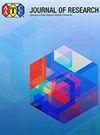聚酯纺织材料吸液性能控制方法的研究
IF 1.2
4区 工程技术
Q4 MATERIALS SCIENCE, TEXTILES
引用次数: 0
摘要
除了聚酯材料的优点,如易于生产,使用和维护,疏水性可能会造成缺点。对聚酯产品进行亲水性整理,可以提高其液体传输性能,并为用户提供更好的舒适性。本研究的目的是通过对100%聚酯织物表面进行部分亲水处理,研究具有亲水性的织物的吸液性能(垂直吸湿、透气性和跌落试验)。它的目的是使用印刷方法而不是填充方法将亲水性整理剂转移到聚酯产品上。在印花应用中,采用100%开、条纹(50%开- 50%闭)、连续蜂窝(65%开- 35%闭)和非连续蜂窝(35%开- 65%闭)模式筛网。通过印花法改变织物表面亲水性处理的比例,评价织物的液体传输性能。就印刷方法作为浸渍法的替代方法的适用性而言,以实现减少化学品消耗,旨在研究通过印刷方法赋予亲水性特征的方法是否可以创建替代填充法的方法。结果表明,织物的液体传输性能可以根据织物亲疏水表面积的比例来控制和改善。此外,观察到织物的液体传输性能取决于这些区域是连续的还是非连续的。本文章由计算机程序翻译,如有差异,请以英文原文为准。
Research on the Method for Controlling the Liquid Absorptivity Behavior of Polyester Textile Materials
Besides the advantages of polyester materials, such as ease of production, usage, and maintenance, the hydrophobic properties could cause disadvantages. Applying hydrophilic finishing to the polyester product, its liquid transmission properties could be improved, and better comfort provided to the user. This study aimed to investigate the liquid absorptivity properties (vertical wicking, water vapor permeability, and drop test) of the fabric given hydrophilic properties by applying a partial hydrophilic process on a 100% polyester textile surface. It aimed to transfer the hydrophilic finishing agent to the polyester product using a printing method other than the padding method. In the printing application, 100% open, striped (50% open – 50% closed), continued honeycomb (65% open – 35% closed), and non-continued honeycomb (35% open – 65% closed) pattern screens were used. The liquid transmission properties of fabrics were evaluated by changing the ratio of the hydrophilic treatment applied to the fabric surface via with the printing method. In terms of the applicability of the printing method as an alternative to the impregnation method in order to achieve decreased chemical consumption, it was aimed to investigate whether the method of giving hydrophilic features by the printing method could create an alternative to the padding method. The results showed that the liquid transmission properties of fabrics could be controlled and improved by the printing method depending on the proportions of the hydrophilic and hydrophobic surface areas. In addition, it was observed that the liquid transmission properties of the fabrics vary depending on whether these areas are continued or non-continued.
求助全文
通过发布文献求助,成功后即可免费获取论文全文。
去求助
来源期刊

AATCC Journal of Research
MATERIALS SCIENCE, TEXTILES-
CiteScore
1.30
自引率
0.00%
发文量
34
期刊介绍:
AATCC Journal of Research. This textile research journal has a broad scope: from advanced materials, fibers, and textile and polymer chemistry, to color science, apparel design, and sustainability.
Now indexed by Science Citation Index Extended (SCIE) and discoverable in the Clarivate Analytics Web of Science Core Collection! The Journal’s impact factor is available in Journal Citation Reports.
 求助内容:
求助内容: 应助结果提醒方式:
应助结果提醒方式:


